We can recall those wonderful motors speeding from New York to Washington or Harrisburg with the Congressional, Broadway Limited, Silver Star, etc., and the hourly New York–Philadelphia “clockers.” The Gs could also be seen in mainline freight service. But to find them on a branch line that normally hosted only multiple-unit cars and small steam engines was unheard of.
My first sighting of a G at the Swarthmore station followed my friend Bus Blundin’s question, “Did you see the GG1 on the 5:42 train yesterday?” I had heard a G horn around that time, but passed it off as having come from the main line to Washington, a mere 2 miles from our house. However, I made sure to be at the station the following afternoon — with my camera.
Why were the GG1s being used on the West Chester line? With gas rationing and the subsequent increase of commuter traffic, there just weren’t enough M.U. cars to accommodate the need. So the PRR brought in locomotive-hauled cars, including some from the Pennsylvania-Reading Seashore Lines that were not needed during the off season, and even some old wooden coaches.
The Media/West Chester trains operated out of underground Suburban Station in Philadelphia, so steam power was out of the question. Instead, the call went out to the reliable GG1. This combination of locomotive power and the odd coaches was used on two outbound late-afternoon schedules and two morning inbound trains.
Bus and I often speculated how the Crum Creek trestle just west of Swarthmore carried the weight of these heavy locomotives. If you stood at creek level, you could see the base plate of one of the piers rise and fall a good inch and a half even as a relatively light M.U. train crossed.
As a 15-year-old, it was very impressive to stand on our humble commuter platform and touch one of those great electrics. I’ve often thought of the GG1 as my No. 1 locomotive. Not a surprise, I guess, considering the initials we share.
First published in Spring 2010 Classic Trains magazine.
Learn more about railroad history by signing up for the Classic Trains e-mail newsletter. It’s a free monthly e-mail devoted to the golden years of railroading.





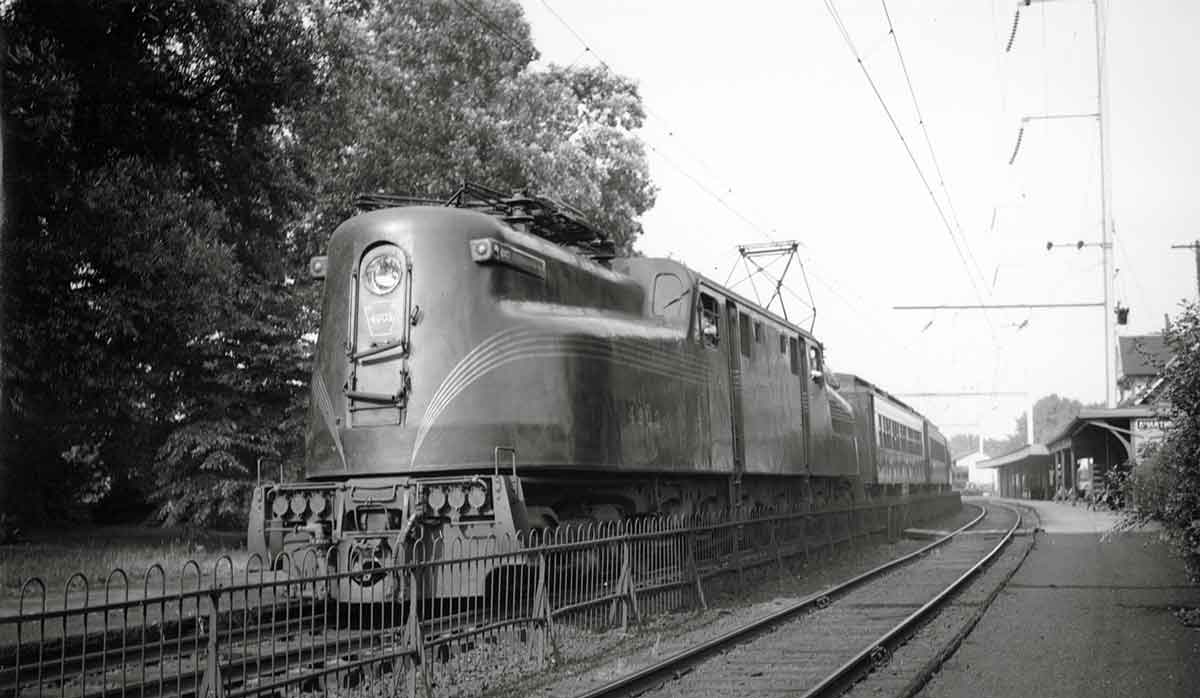

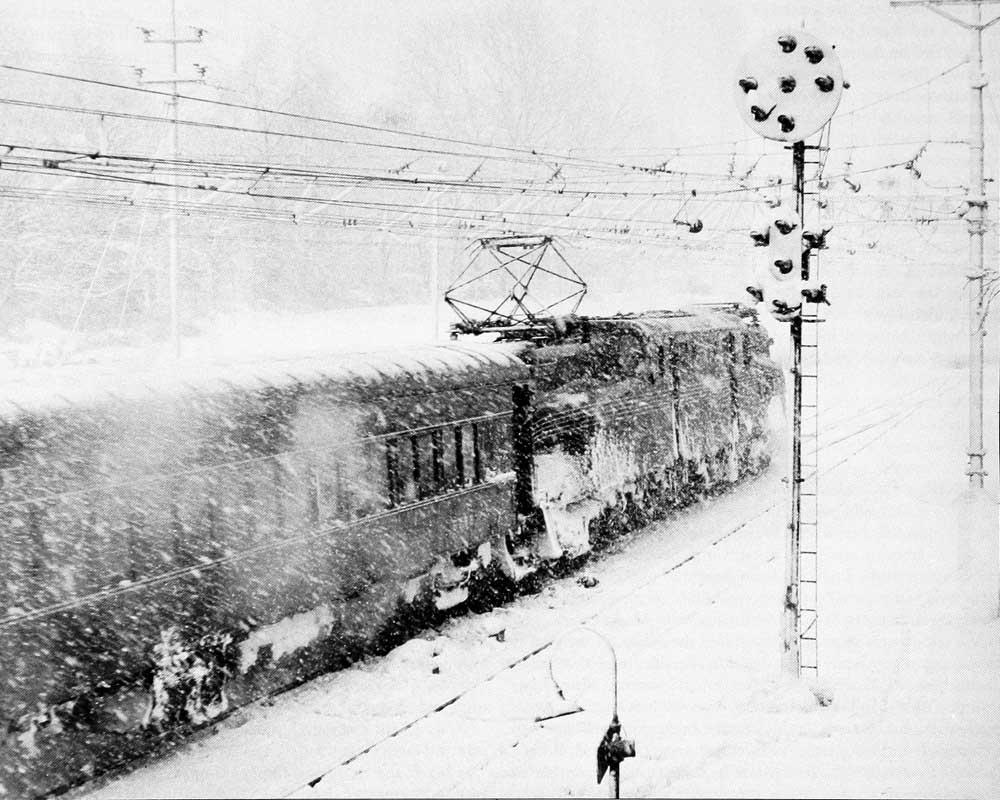
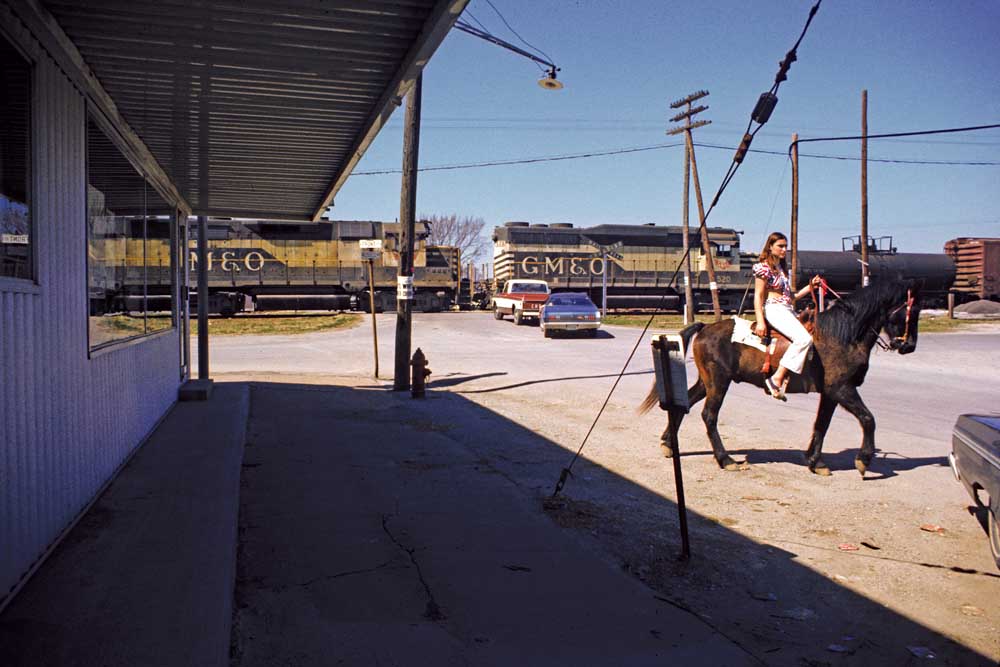
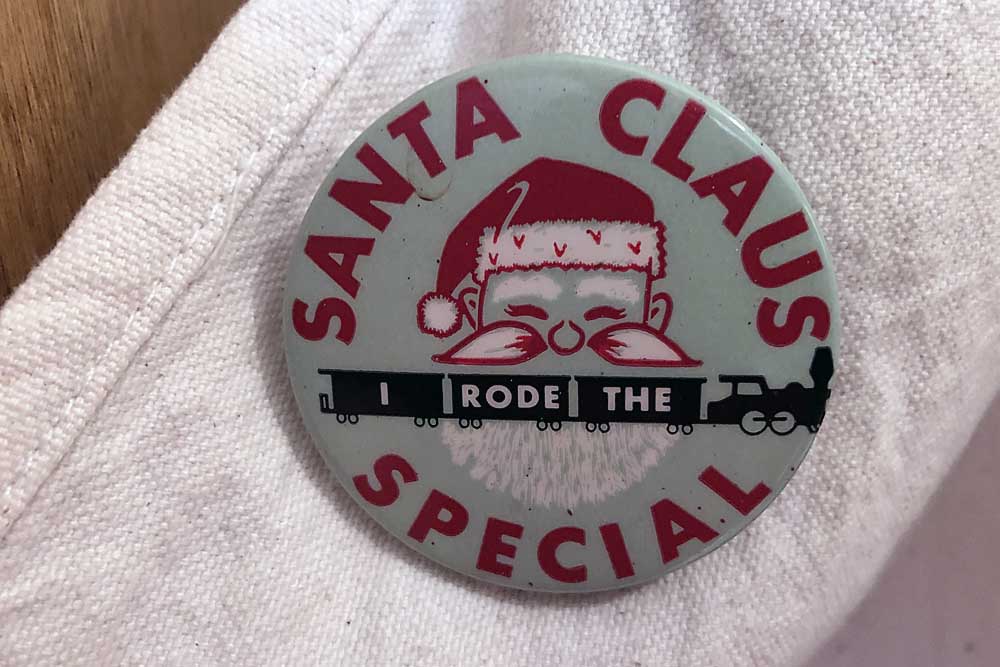
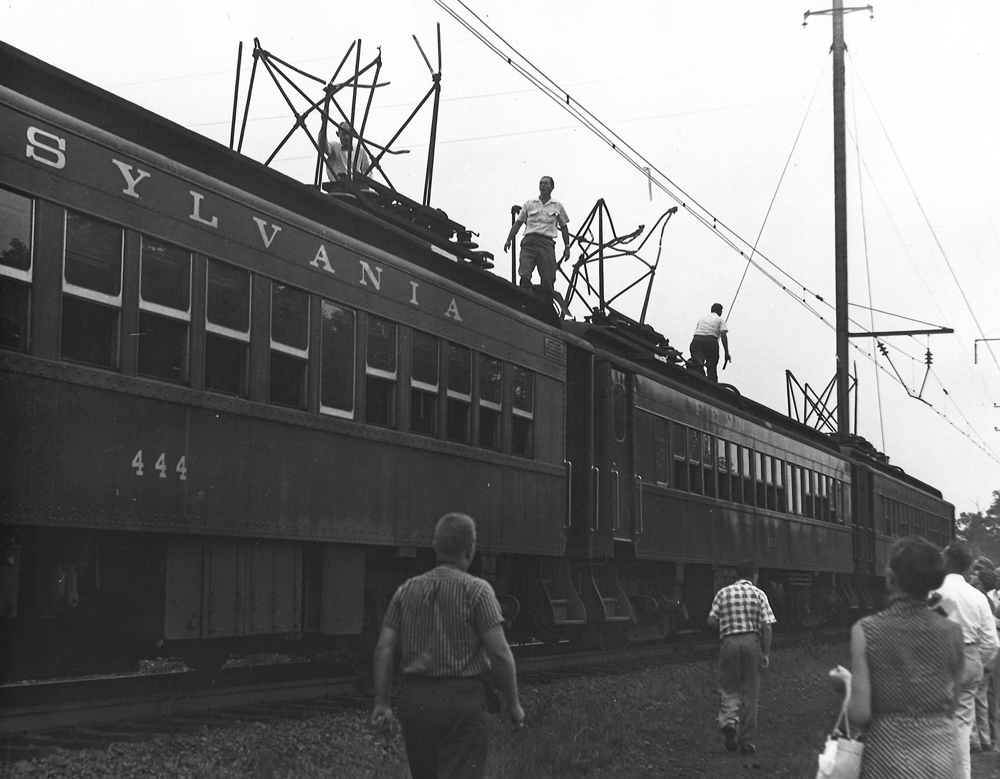




The GG-1 definitely remains my favorite straight electric locomotive.
That’s natural, because I was born at Frankford Hospital in Northeast Philadelphia in 1946 and lived in that section of the city until I was seven. In 1953 we moved to Havertown (Haverford Township), which Philly, with US Route 1 being the boundary. My Dad didn’t learn to drive or buy a car until he was 40 and I was 14. So we relied on public transportation and our legs. By necessity we learned to orient ourselves, read maps and schedules, and keep track of the time.
Dad commuted to his teaching job at Temple University on North Broad Street. From Frankiford he rode the 56 trolley (which already was using PCC cars, which he didn’t like, because when he tried reading on them he got carsick, which he didn’t on the older, rougher riding streetcars!) and the Broad Street Subway. From Havertown he used the Red Arrow Lines’ Ardmore “railcars” (as a sign in the 69th Street Terminal called them, the Market-Frankford Subway Elevated and the Broad Street Subway. As I remember, he finally shifted to driving when the public transit fares rose to a total of a dollar a day.
Before 1953 we lived two longish blocks inland from the Pennsy’s New York Division tracks. Aall our close relatives were also in Northeast Philadelphia, broadly defined, but scattered. Our Babcia and Dziadzia (Mom’s mother and stepfather, born in Poland) were still in Frankford, but on the other side of the PRR, which Dad insisted was in Bridesburg — he’d been teasing her about that since they were classmates at Frankfort High. They lived close to Barrett’s chemical works. We rode trolley buses to get there and also to the house of our Omama and Otata farther west in the Feltonville section, which had many Germans (like Grandpop, my Dad’s father and Otata, his first cousin and Dad’s godfathers) and Hungarians, like Omama. To get to their house we’d ridden trolleys until a conversion when I was two years old or even younger, and I do remember riding the old trolleys through cemetery. The oldest of my brothers, a bit more than a year younger than me, were making that trip by ourselves when I was five. My Uncle Steve and his wife Wanda (Mom’s younger sister) and their daughters lived at Babcia’s house until they moved farther northeast (still in the city) to Rhawnhurst, which we reached using another trolley bus line. Uncle Henry (Dad’s oldest brother) and his family were living in Northeast Village, World War II military housing, which meant a bus ride even farther out Roosevelt Boulevard (US 1) or, more likely, a car ride with Uncle Johnny, their middle brother. He and his wife and kids were the first to move to suburbia, namely Secane, the westernmost extension of Upper Darby, which had its own station on the PRR line through Swarthmore to Media and West Chester. Until 1953 we rode the Frankford El to Center City and then the PRR’s old electric MU’s to get there; for years afterwards Uncle Johnny would drive to Havertown to pick us up. When we got rides, we packed so many of us into cars that when we got out we looked like clowns at the circus.
Once in Havertown we visited relatives in Northeast Philly at least two or three times a month. Until 1960 that meant the Ardmore trolley, the Market-Frankford Subway-Elevated to it’s penultimate station and a trackless trolley ride, for about two hours door to door on a Sunday. After Dad started driving it was about 45 minutes each way.
My favorite place from which to watch Phillies games at Connie Mack Stadium was the upper deck on the third base side, from which I could also watch trains to and from New York.
From sixth grade on, once a week I rode the Ardmore trolley to 69th Street, then most of one of the Red Arrow’s longest bus routes, the Chester one, as far as the southern part of Swarthmore, from which I walked a mile or so, carrying my cello, to my teacher’s house in Springfield. I walked home from there at least once, with cello; that was about 8 miles, including a major hill. In eleventh and twelfth grade I rode the trolley (or the P&W interurban) into Center City every Saturday morning during the school year for rehearsals of the Youth Orchestra of Greater Philadelphia, following which I often walked to Logan Circle on the Ben Franklin Parkway (for the city’s main library or one of several museums) or rode an “underground trolley” (officially, subway-surface car) to the University of Pennsylvania for its museum. On at least one occasion I did the homeward trip mostly on foot, again, with my cello, riding only from West Overbrook to Beechwood-Brookline on the P&W, cutting the distance from about 12 miles to 10 or 11.
A frequent highlight of those Saturdays was going to the north edge of the outdoor parking lot of the PRR”s 30th Street Station, overlooking the Race Street engine terminal, with lots of GG-1s and other interesting equipment. A skyscraper now blocks that view, and the GG-1’s are gone, of course. Every time I catch an Amtrak train at 30th Street — much less frequently since Mom died in 2003 — I can’t surpress the wish that one of them would power the train, instead of “some other locomotive”!
You might expect me to model the PRR. Actually, each summer until at least 1959 we’d spend summers near Huletts Landing, NY on Lake George. For a few years, we’d rent a cottage on the mainland, but soon switched to camping on one of the state-owned islands. Until at least 1959, that nearly always meant riding the PRR to New York City’s Penn Station, subways to Grand Central — cabs were for rich people –, the New York Central to Albany, and the Delaware & Hudson to Whitehall, where Uncle Johnny, who’d driven up earlier, would pick us up in his car for the drive over the mountain to Huletts. I got into HO scale around 1958; by 1962 I was most interested in the D&H. But I have some Pennsy passenger cars and a lot of PRR freight cars!
I remember the GG1s fondly as well. My father used to take my trackside at Bridesburg station. I never saw GG1s in commuter service but they used to glide by at about 80 mph as the began to slow for the curve at Frankford junction. More impressive though was listening to them howl as they came back up to speed with the Northbound trains coming out of Frankford jct. one day we went trackside and someone had let my dad know that the express track was out of service for track maintenance from Frankford jct to Holmesburg jct, so the GG1 would be running on the local track. At Bridesburg there was a freight track between the local track and the platform. We could only stay about an hour that day, but I was there record to record it in my brain for posterity. Don’t you know, an SW came trundling along the freight track with about ten box cars just as a NB GG1 came by at speed. One more funny thing, when I was perhaps 5 or 6, before I knew about calling them GG1s, I called them the Rose Train, because of the Tuscan red color and the shape of the pantograph. “Let’s go see the Rose Trains dad”, I used to say when we hadn’t been there in a while – I just thought they were the coolest thing. And thanks for sharing your GG1 memories.
That is certainly a horse of a different color in MU territory. A Phila. Terminal time-table from 1948 shows the West Chester Branch from Arsenal to Media as okay for GG-1, P-5 or K-4 type locomotives – the electrics limited to one unit; tenders to less than 15K gallons. Speed was 50mph passenger, whereas it’s 60mph for MU equipment. Six bridges have further restricted speeds for anything but MUs. This would likely be in deference to the Crum Creek bridge you mention among others on the branch. Speed was 50mph passenger, whereas it’s 60mph for MU equipment. PRR got excellent use out of its GG-1 fleet and I share your respect for them. Anyone who has seen these motors pass with a high-speed passenger train in a charging howl, or down on its knees leading a heavy freight with sand flying and a determined hum can never forget the classy versatility of the Gs. I enjoyed your interesting recollection.
When we were first married GE transferred me to their Missile and Space Division at Valley Forge, PA. We wound up living in Levittown, PA for seven years. Levittown had a train station as well as Trenton, NJ. I remember seeing the GG-1’s pulling commuter trains from Philadelphia to New York City. The GG-1 was nothing like a steam locomotive but I had both with my collection of Lionel equipment.
While in Levittown all three of our children were born at Lower Bucks County Hospital. My wife and I were both from Cincinnati, OH. We eventually moved back to Cincinnati for good but I have found memories of watching (and riding) the PA trains coming through.
PRR was one of 7 major railroads that had passenger service to Cincinnati Union Terminal.